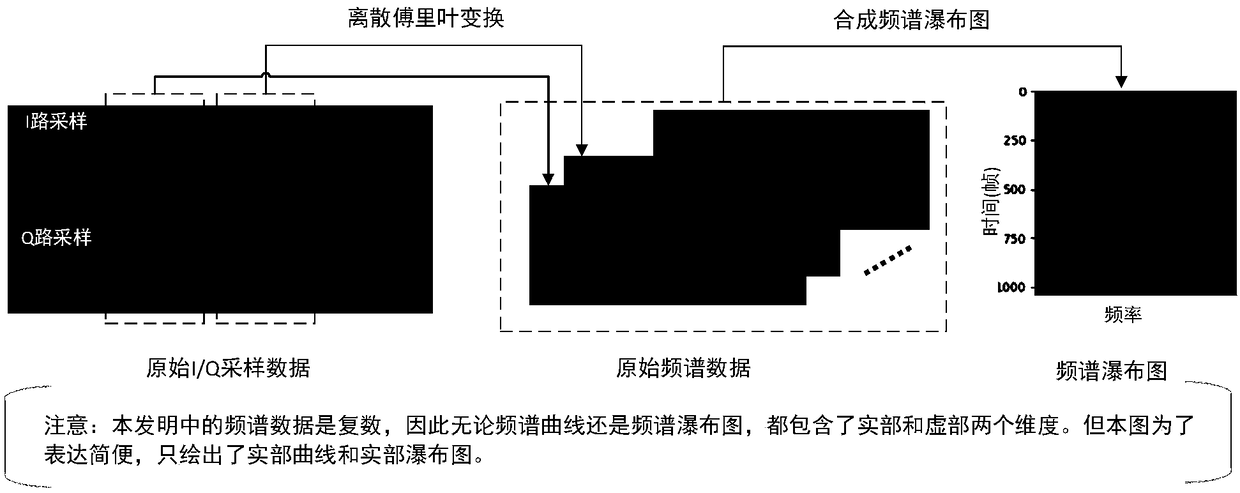Radio signal identification method based on end-to-end convolutional neural network
A convolutional neural network and radio signal technology, applied in neural learning methods, biological neural network models, neural architectures, etc., can solve problems such as complex manual feature extraction, avoid feature selection and feature measurement links, and easily label training data , the effect of reducing computational complexity
- Summary
- Abstract
- Description
- Claims
- Application Information
AI Technical Summary
Problems solved by technology
Method used
Image
Examples
Embodiment Construction
[0023] The present invention will be further described in detail with reference to the accompanying drawings and implementation examples. These implementation examples are described in sufficient detail to enable those skilled in the art to understand and practice the present invention. Logical, implementation and other changes may be made in the implementation without departing from the spirit and scope of the invention. Therefore, the following detailed description should not be taken in a limiting sense, and the scope of the present invention is defined only by the claims.
[0024] The content of the above invention describes in detail a radio signal recognition method based on an end-to-end convolutional neural network from the perspective of core ideas and algorithms. However, in the actual development process, in addition to realizing the content of the present invention, some additional work is required. A specific embodiment of the present invention will be introduce...
PUM
 Login to View More
Login to View More Abstract
Description
Claims
Application Information
 Login to View More
Login to View More - R&D
- Intellectual Property
- Life Sciences
- Materials
- Tech Scout
- Unparalleled Data Quality
- Higher Quality Content
- 60% Fewer Hallucinations
Browse by: Latest US Patents, China's latest patents, Technical Efficacy Thesaurus, Application Domain, Technology Topic, Popular Technical Reports.
© 2025 PatSnap. All rights reserved.Legal|Privacy policy|Modern Slavery Act Transparency Statement|Sitemap|About US| Contact US: help@patsnap.com



